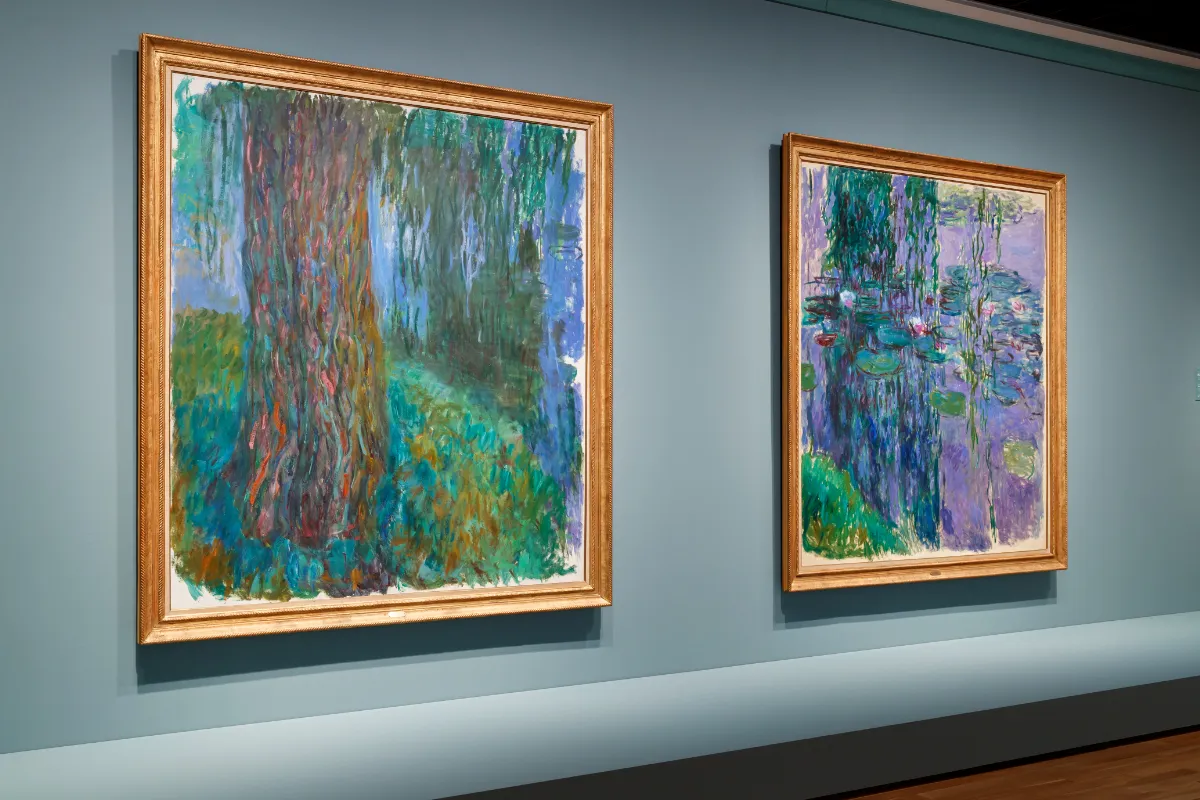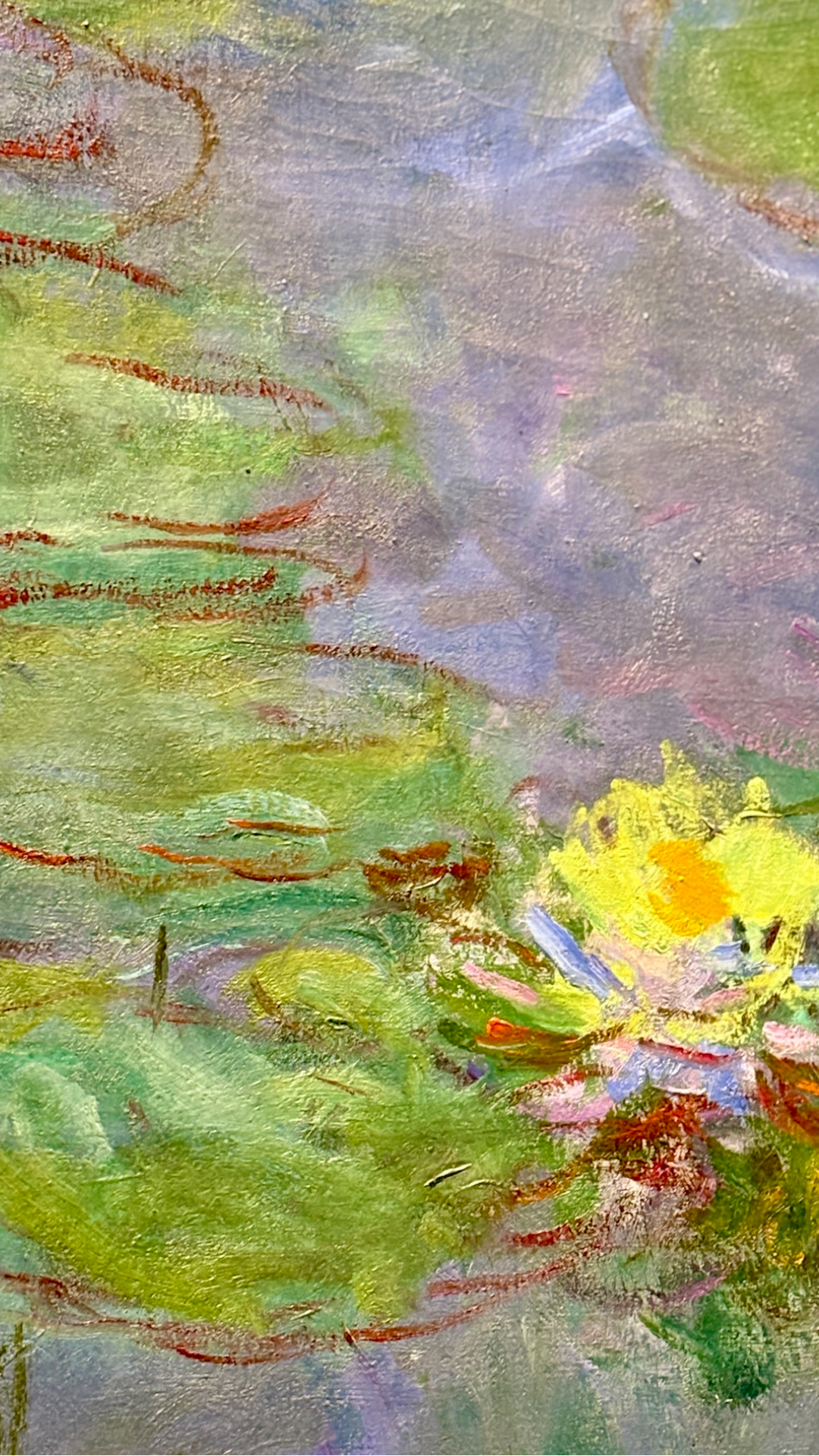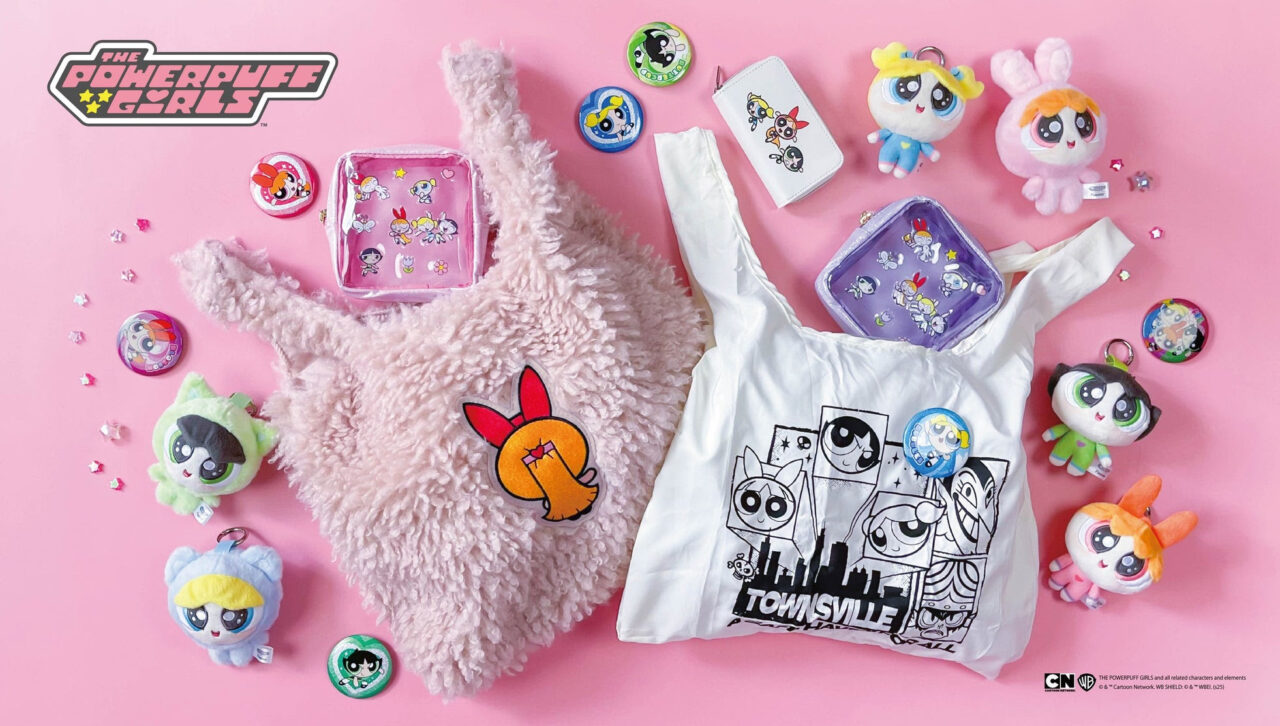INDEX
The Impact of Art on Society Through Wartime Paintings
The exhibition wraps up with an epilogue titled “The Upside-Down World,” showcasing two large, nearly square canvases depicting weeping willows and a pond of water lilies. These pieces serve as studies for the left panel of the “Grand Decorations” and can be seen as a cohesive landscape. But why, at the end of the exhibition, are earlier “Water Lilies” works revisited?

(Right) Water Lilies, c. 1916-1919, Oil on Canvas, Musée Marmottan Monet, Paris © Musée Marmottan Monet / Studio Christian Baraja SLB ©︎ytv
The weeping willow, which seems to weep as though shedding tears, was considered a symbol of sorrow and mourning. Monet began creating his Grand Decorations—his ultimate artistic achievement—in 1914, the same year that World War I began. During that year, Monet expressed, “In a time when so many are suffering and losing their lives, it may seem shameful to focus on the insignificant details of form and color. But for me, this is the only way to escape the sorrow.” This quote was prominently displayed at the exhibition. From this, we can see Monet’s deep commitment to what he could contribute as an artist, and the museum’s belief in the role art can play in society.
After the war, Georges Clemenceau, the prime minister and a close friend of Monet, received part of the Grand Decorations. He found in the mirrored reflections of the water the “upside-down world,” where all things of the universe are condensed. The feeling evokes something like heaven or the afterlife… at least that’s what I think. Standing before the works, one experiences an overwhelming sense of tranquility.






















